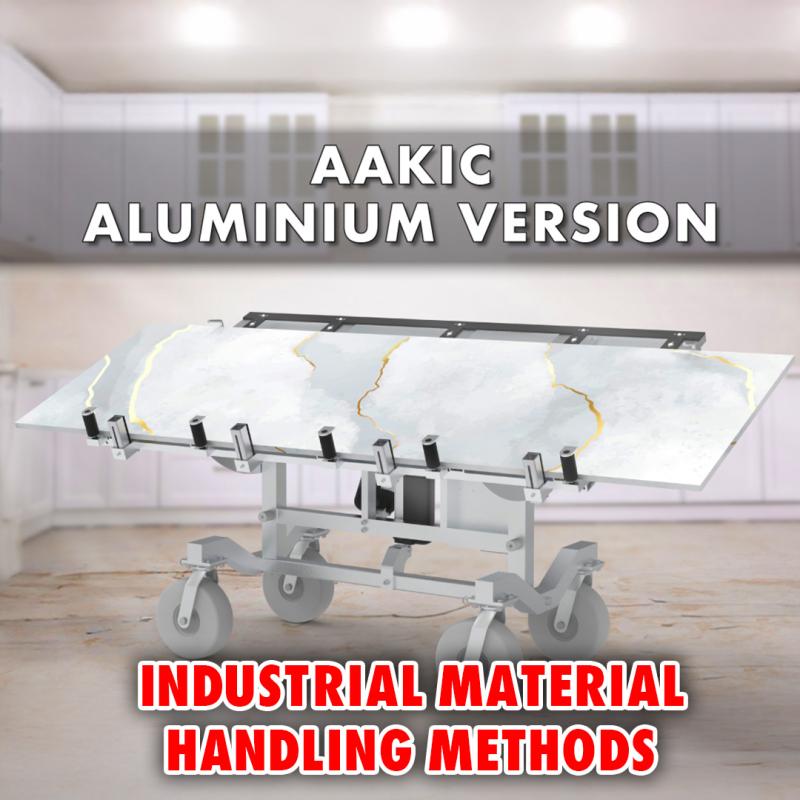



 Efficient material handling reduces labor costs, accelerates production cycles, and enhances workplace safety. In today’s material handling industry, companies rely on a combination of conveyors, cranes, industrial trucks, and specialized lifting equipment to move, store, and protect inventory. This article explores the most common material handling methods, highlights key equipment types, and offers best practices for optimizing your facility’s workflow.
Efficient material handling reduces labor costs, accelerates production cycles, and enhances workplace safety. In today’s material handling industry, companies rely on a combination of conveyors, cranes, industrial trucks, and specialized lifting equipment to move, store, and protect inventory. This article explores the most common material handling methods, highlights key equipment types, and offers best practices for optimizing your facility’s workflow.
Material handling encompasses the movement, protection, storage, and control of products throughout manufacturing, warehousing, and distribution processes. Effective material-handling equipment choices depend on load characteristics, facility layout, throughput requirements, and safety considerations. Leading material handling companies advise prioritizing workflows that:
By prioritizing material handling workflows, businesses can achieve higher throughput with fewer accidents and lower operational costs.
Conveyors are fixed-path systems that transport goods over consistent routes—ideal for high-volume, uniform loads without route interruptions.
Conveyors represent one pillar of comprehensive material handling equipment strategies, complementing mobile and overhead systems.
Overhead solutions leverage ceiling or structure-mounted systems to move loads without using valuable floor space.
Gantry cranes span across open floor areas, ideal for workshops and outdoor yards. For automated environments, intelligent portable gantry cranes systems provide flexible routing, remote operation, and rapid deployment—key for dynamic production lines. Their adaptability supports heavy-duty handling equipment and integration with automated guided vehicles (AGVs).
Industrial trucks—including forklifts and walk-behind lift trucks—offer flexible, on-demand material movement across warehouses and yards.
These vehicles are the workhorses of the handling material process, adapting to various aisle widths and load profiles.
Scissor lifters excel in vertical material positioning, while slab lifters handle large, flat loads like stone or glass safely. For example, slab lifters ensure damage-free transport of fragile panels, and you can also leverage scissor arms to adjust load height precisely. Integrating scissor lifter technology reduces manual lifting and lowers the risk of product damage.
Beyond bulk conveyors and trucks, specialized tools cater to unique load shapes and handling challenges.
Vacuum lifters use suction cups and vacuum pumps for non-porous materials. Industries handling stone slabs, glass panels, or sheet metal rely on these units for quick, ergonomic lifting. Explore precision vacuum lifter products . Their modular design allows single-operator control, reducing cycle times and labor fatigue.
Lifting clamps secure beams, plates, and profiles during hoisting operations. Key clamp types include plate clamps, beam clamps, and slab lifter variants. For strapping and load restraint, ratchet straps systems prevent slippage and ensure safe transport. Combining clamps with hoists or cranes creates a versatile lifting solution for irregular loads.
Adhering to industry-leading practices not only safeguards people and products but also maximizes operational efficiency.
By integrating advanced material handling equipment and reinforcing operator protocols, facilities can achieve consistent uptime and compliance. Integrating advanced material handling equipment
Selecting an experienced partner in the material handling industry is crucial. Look for companies that offer:
Working with reputable material handling companies ensures you gain access to the latest lifting equipment, from basic hoists to gantry crane material handling solutions.
The next frontier in material handling blends robotics, IoT connectivity, and AI-driven analytics:
By adopting these innovations, manufacturers can achieve unprecedented levels of agility, accuracy, and throughput.
Industrial material handling is an evolving field, where choosing the right combination of conveyors, overhead systems, trucks, and specialized lifting devices makes all the difference. From scissor lifter assemblies that guarantee slab lifters ensure damage-free handling, to vacuum lifter innovations and gantry crane material handling solutions, each method addresses unique operational challenges.
When you align equipment selection with best practices—in standardization, safety training, and workflow planning—you transform material handling from a necessary cost center into a competitive advantage. Explore how intelligent portable gantry cranes systems, ergonomic lifting clamp tools, and ratchet tie down traps can elevate your processes, and partner with leading providers to stay at the forefront of the material handling industry.
Sign up to receive the latest info on new Aardwolf products, special offers and more.
By signing up you agree to receive emails from Aardwolf with news, special offers, promotions and other information. You can unsubscribe at any time.